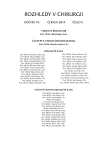Complex surgical management of hemodialysis vascular access infection caused by Clostridium perfringens
Authors:
MUDr. David Janák, Ph.D.; R. Novotný; M. Slavíková; T. Grus; J. Lindner
Authors‘ workplace:
II. chirurgická klinika-kardiovaskulární chirurgie, 1. lékařská fakulta, Univerzita Karlova v Praze
a Všeobecná fakultní nemocnice v Praze, přednosta: Prof. MUDr. J. Lindner, CSc.
Published in:
Rozhl. Chir., 2014, roč. 93, č. 6, s. 325-327.
Category:
Case Report
Overview
Infection of prosthetic hemodialysis (HD) shunts is one of the most common complications of vascular access in hemodialysis patients. The incidence of anaerobic infection is very rare. In such a case, management of treatment represents a great challenge for the surgeon. We report a complicated case of autologous hemodialysis shunt infected by Clostridium perfringens on the right forearm in a polymorbid female patient with chronic renal failure and myelodysplastic syndrome. The patient has undergone repeated establishment of HD shunt with subsequent polybacterial local infectious complications. Destructive clostridial infection developed at the site of the infectious complications. This very rare complication involving infection by an atypical bacterial agent requires rapid diagnosis and comprehensive multimodal treatment including surgical, antibiotic and supportive therapy. Clinical implications and optimal therapy is not precisely defined in these cases.
Key words:
vascular access – infection – Clostridium perfringens
Sources
1. Bonomo RA, Rice D, Whalen C, et al. Risk factors associated with permanent access-site infections in chronic hemodialysis patiens. Infection Control and Hospital Epidemiology 1997;18:757–761.
2. Tordoir JH, Herman JM, Kwan TS, et al. Long-term follow-up of the polytetrafluoroethylene (PTFE) prosthesis as an arteriovenous fistula for haemodialysis. European Journal of Vascular Surgery 1988;2:3–7.
3. Schutte WP, Helmer SD, Salazar R, et al. Surgical treatment of infected prosthetic dialysis arteriovenosus grafts: total versus partial graft exciton. Am J Surg 2007;193:385–8, discussion 388.
4. Jaar BG, Hermann JA, Furth SL, et al. Septicemia in diabetic hemodyalisis patiens: comparison on incidence, risk factors, and mortality with non-diabetic hemodialysis patiens. Am J Kidney Dis 2000;35:282–92.
5. Palder SB, Kirkman RL, Whittemore AD, et al. Vascular accesss for hemodialysis: patency rates and results of revision. Ann Surg 1985;202:235–239.
6. Bennion RS, Wiliams RA, Wilson SE, et al. Vascular prosthetic infection. Infect Surg 1982;1:45–55.
7. Stevenson KB. Manamegent of hemodialysis vascular access infections. In Gray RJ. (ed): Dialysis access. Philadelphia, Lippincott Williams a Wilkins 2002;98–106.
8. Janoušek L, Baláž P, a kol. Hemodialyzační arteriovenózní přístupy. Praha, Grada Publishing 2008:117.
9. Marr KA, Sexton DJ, Conlon PJ, et al. Catheter related bactermia and outcome of attempted catheter salvage in patients undergoing hemodialysis. Ann Intern Med 1997;127:275–280.
10. Gorbach SL, Thadepalli H. Isolation of clostridium in human infections: evaluation of 114 cases. J Infect Dis 1975;131:581–585.
11. Brook I. Role of anaerobic bacteria in aortofemoral graft infection. Surgery 1988;104:843–845.
12. Oliveras A, Orfila A, Inigo V. Clostridium perfringens: an unusual pathogen infecting arteriovenous shunts for dialysis. Nephron 1998;80:479.
13. Kasper DL, Zaleznik lDF. Gasgangrene, antibiotic-associated colitis, and other Clostridial infections. Harrison’s principles of internal medicine. New York, McGraw-Hill 1998:906–910.
14. Meer RR, Songer JG, Park DL, et al. Human disease associated with Clostridium perfringens enterotoxin. Rev Environ Contam Toxicol 1997;150:75–94.
15. Chapnick EK, Abter EL, et al. Necrotizing soft-tissue infections. Infect Dis Clin North Am 1996;10:835–55.
16. Hitchcock CR, Demello FJ, Haglin JJ. Gangrene infection: New approaches to an old disease. Surg Clin North Am 1975;55:1403.
17. West M, Pirrene J, Chavers B, et al. Clostridium difficile colitis after kidney and kidney-pancreas transplantation. Clin Transplant 1999;13:318–323.
18. Thom SR. Functional inhibition of neutrophil B3 integrins by hyperbaric oxygen in car-bon monoxide mediated brain injury. Toxicol Appl Pharmacol 1993;123:248.
19. Heimbach R. Gas gangrene. In Kindwall E, Whelan H (eds): Hyperbaric Medicine Practice, 2nd ed. Revised. Flagstaff, AZ, Best Publishing Company 2004:549.
Labels
Surgery Orthopaedics Trauma surgeryArticle was published in
Perspectives in Surgery

2014 Issue 6
Most read in this issue
- Basic principles of diagnosis and treatment of secondary peritonitis – recommendations of experts with the support of SIS
- Primary small bowel volvulus in a young adult
- Clostridial myonecrosis of the abdominal wall – case report
- A new strategy in the surgical treatment of multiple liver tumors – ALPPS
